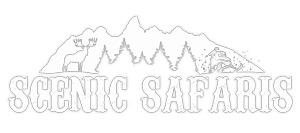A Guide to Snow Travel in National Parks
America’s National Parks saw record attendance in 2016, with around 330 million tourists checking out the sights. Most of them visited in spring, summer or fall, when the majority of parks see their best weather. Yellowstone National Park and Grand Teton National Park – both located near Jackson Hole, Wyoming – were among the most visited parks in the western states.
While winter travel in Wyoming’s parks is restricted, the cooler months offer picturesque scenery and wildlife encounters unique to the season. Here are a few of the ways that tourists can get in on the action around Yellowstone and Grand Teton, even in heavy snow.
Snowmobiling
A favorite mode of transportation for winter sports enthusiasts, snowmobiles can reach upwards of 150 miles per hour! Of course, you won’t be going anywhere near that speed inside any of America’s National Parks. Since most winter travelers do not bring their own snowmobiles, seek out Scenic Safaris. Their seasoned guides host winter treks through Wyoming’s major wilderness areas, including Yellowstone and the Gros Ventre Mountains. If you’ve never ridden a snowmobile before, don’t panic. Your guide will provide gear, snowmobile and instructions. It’s not hard, especially compared to other vehicles: just point the front of your snowmobile where you want to go and hit the throttle. There’s a brake, and a stop button, though newbies should listen to proper stopping procedures closely or you’ll risk getting bucked off like a city slicker from a mechanical bull.
Snowshoeing
If you’re brave enough to hike the parks in winter, snowshoeing is the only way to go – literally. To get started, you’ll need snowshoes sized for your feet, as well as poles, cold-weather clothing such as a snowsuit or ski jacket, and lightweight hiking gear. Insulated hiking boots are also a good idea. According to popular outdoor outfitter and co-op REI, snowshoeing is nearly as easy as walking. “The learning curve is much shorter than that of skiing or snowboarding,” it says on their instructional website. To get started, take a wider than normal stance and just put one foot in front of the other. You’ll need to adjust techniques for uphill climbs and descents – and you’ll definitely feel the burn in your legs and groin – but otherwise it really isn’t that much different than hiking. Skiing poles can be used for stability and to assist with ascents.
Vehicle Tours
Many would-be national park tourists are scared away from winter travel by frigid temperatures and difficult terrain. We don’t blame them. It’s not exactly comfy to bundle up in three layers of wool and polyester and deal with masks, goggles and open vehicles. Luckily, Scenic Safaris offers full-day snowcoach tours of Yellowstone in a large truck/bus hybrid specially outfitted for over-snow travel, plus a half-day visit to Grand Teton in a luxury van also suited for winter excursions. Why choose one of these options? Heat, glorious heat. It can also be tricky to enter the parks in winter without a guide. Yellowstone National Park, for example, has only a single road that’s open year-round. Head to one of the other entrances and you’ll be greeted with a CLOSED sign, not to mention an hour or more’s travel to the next entry point.
To paraphrase a famous Theodore Roosevelt quote, nothing worth doing comes easy. Winter travel in Wyoming’s National Parks may be more challenging than a summer visit, but the reward is pristine wilderness and snow-capped scenery straight out of a travel book. Scenic Safaris can help make your winter trek near Jackson Hole safe, yet still exciting. Contact us at 888-734-8898 or click here to get your adventure started.
